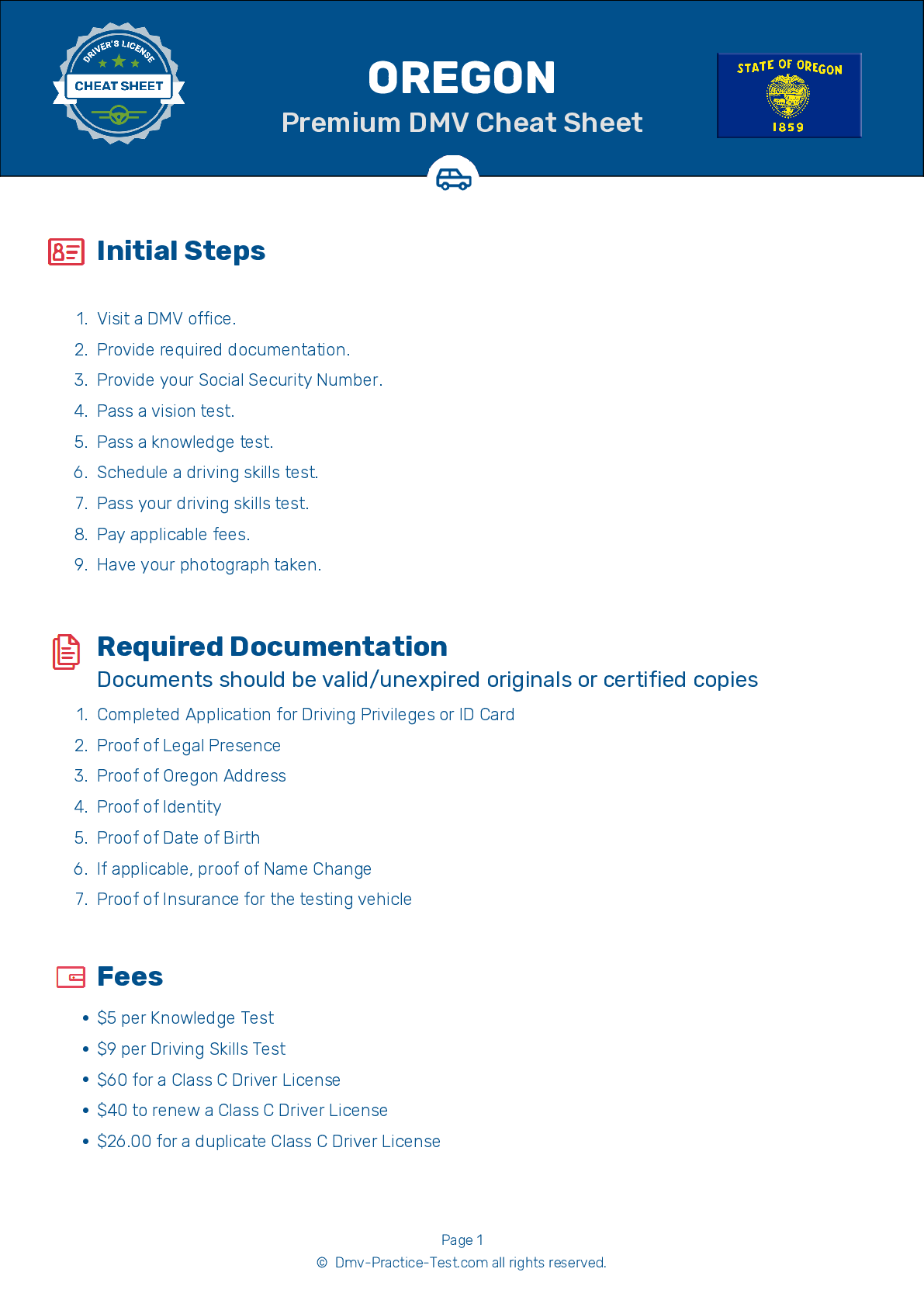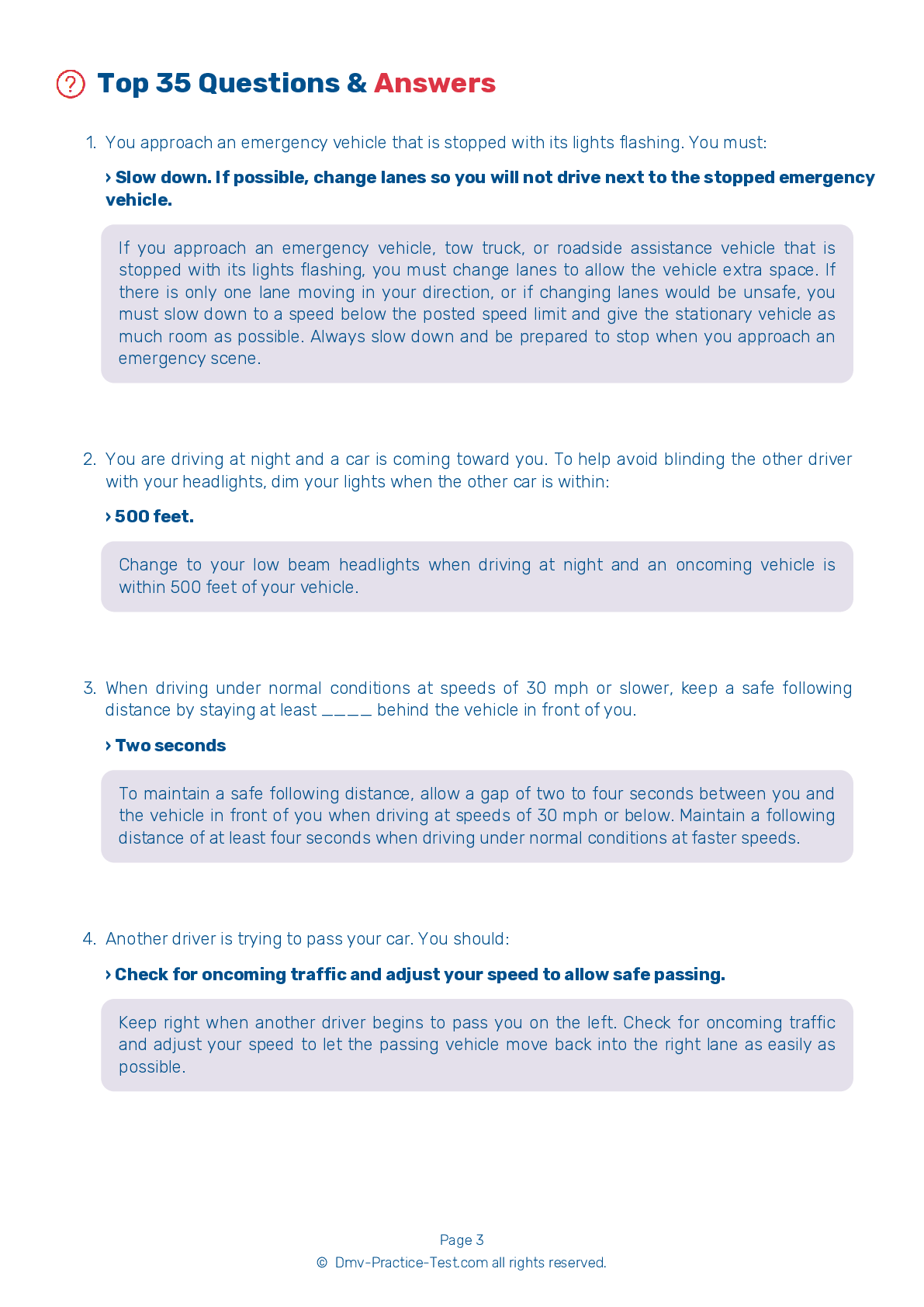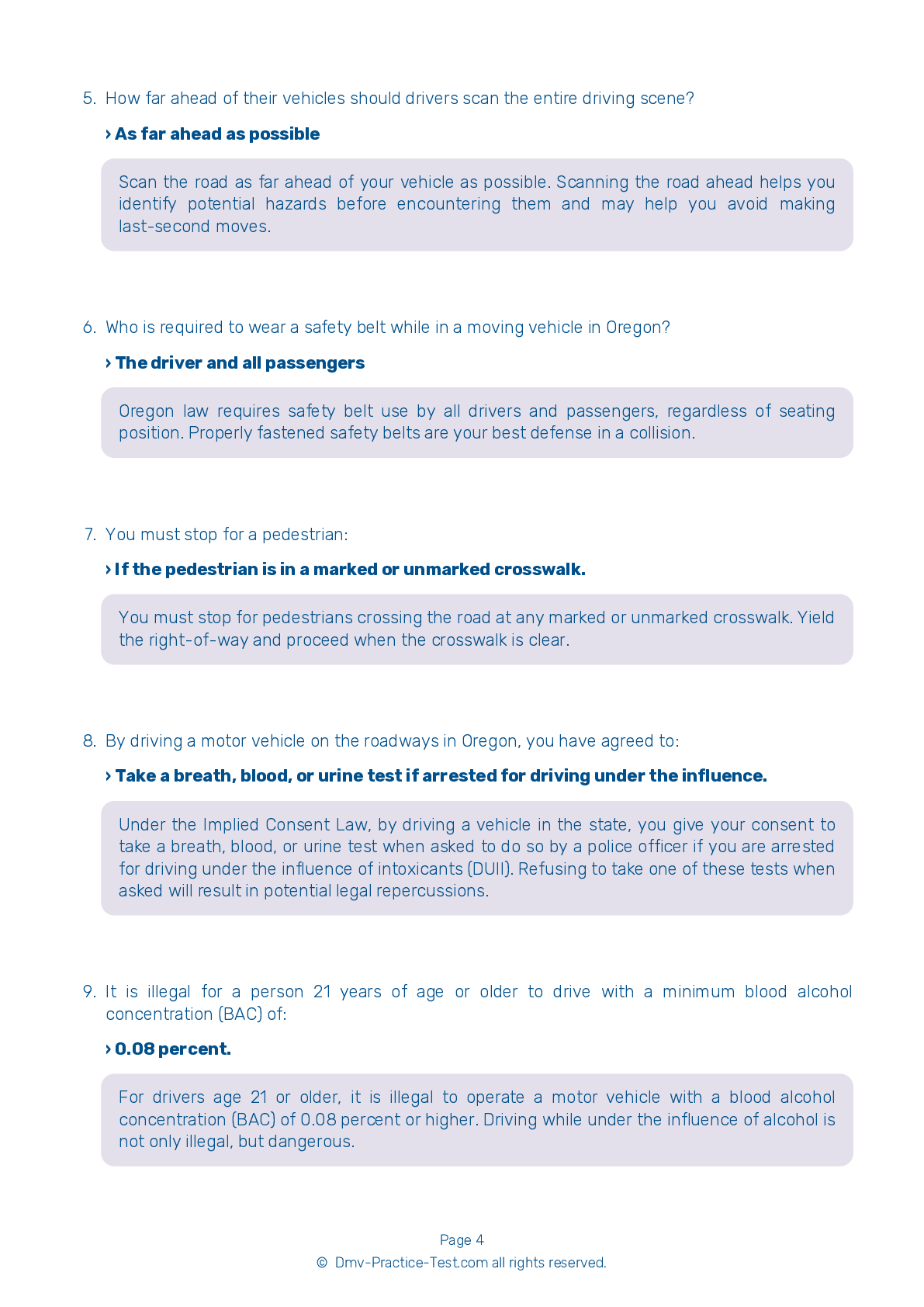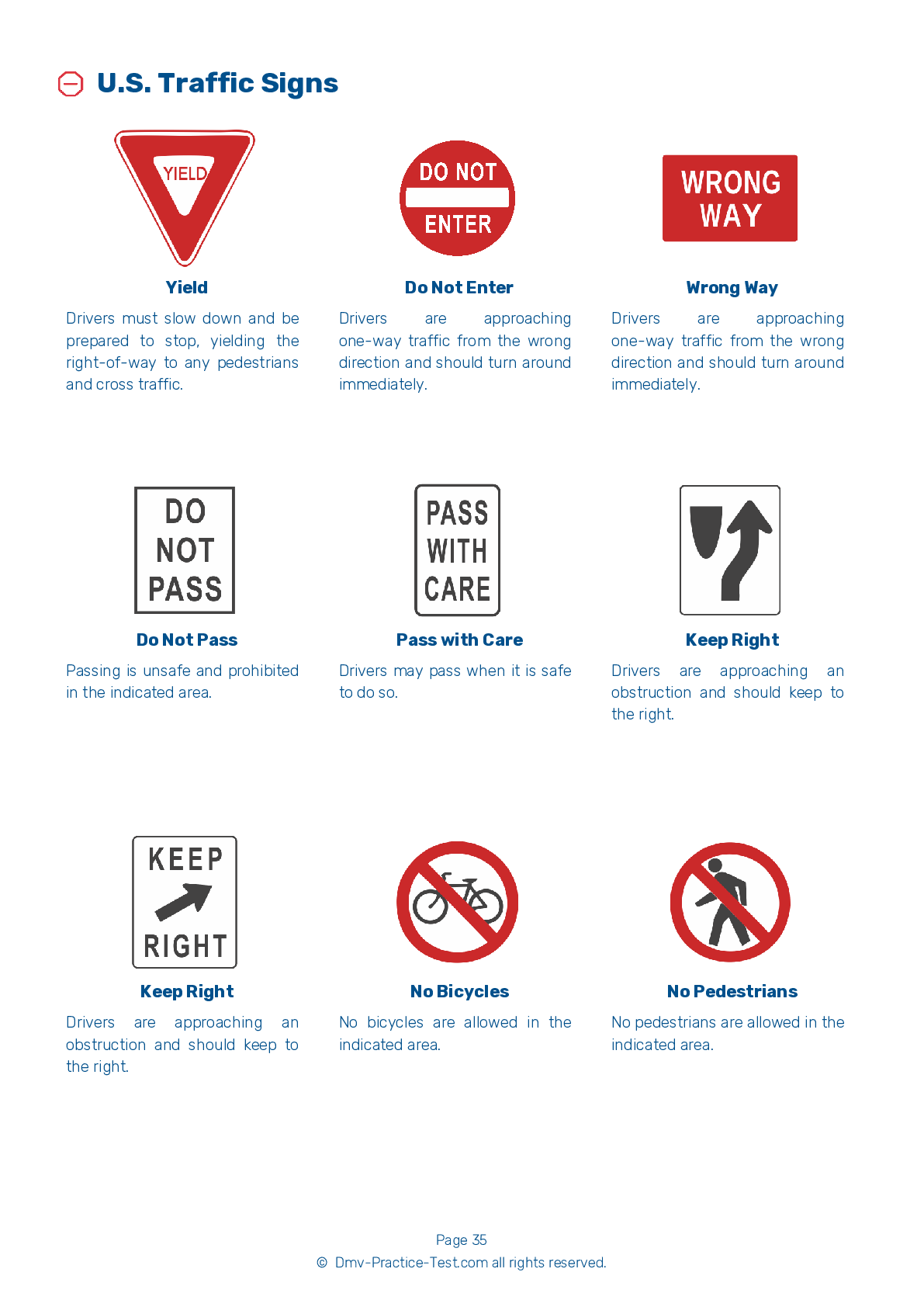FREE Oregon DMV Practice Test #10 Page 2 of 5
The practise exams for the Oregon DMV have been updated for January 2025. It includes questions based on the most important traffic signals and regulations for 2025 from the Oregon Driver Handbook. To study for the DMV driving permit test and driver's licence exam, use actual questions that are very similar (often identical!) to the DMV driving permit test and driver's licence exam.
Each question on the practise exam has a tip and explanation to help you recall the ideas. Questions about traffic rules, traffic signs, and driving statutes, as well as knowledge from the Driver Handbook, will be included in the written portion of the official Oregon DMV test.
You must properly answer 28 of the 35 questions to receive a passing mark. Use the Oregon Department of Motor Vehicles' practise exam to help you prepare for your instruction permit or driver's licence.
The DMV exam is offered in a variety of languages.
Using any form of testing help will result in an automatic fail, and the DMV may take further action against your driver's licence, so avoid it.
8 . When two vehicles enter an intersection from different highways at the same time, which vehicle must yield the right-of-way?
At intersections that are controlled by signs or signals and at intersections that are uncontrolled, the driver on the left must yield the right-of-way to the driver on the right when two vehicles arrive to the intersection at the same time.
9 . A driver entering public traffic from a driveway or private road:
If you are entering traffic from a driveway or private road, you should yield to drivers already on the public road. Merge safely into traffic when you are able to do so.
10 . When driving past a vehicle that has just stopped in a parked position on the side of the road, you should:
When passing a vehicle that has just parked parallel to the road, you should assume the driver will open the door as you approach. Use extra caution when driving near parked vehicles.
11 . This sign means:
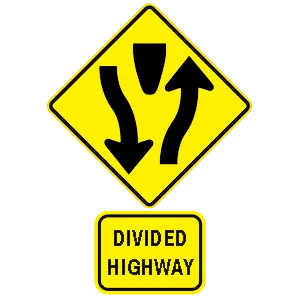
Warning signs are usually diamond-shaped with black markings on a yellow background. They alert drivers to upcoming hazards. This warning sign indicates that drivers are about to encounter a divided highway.
12 . What should you do if your vehicle’s right wheels leave the pavement?
If your vehicle’s right wheels leave the pavement, don't panic. Take your foot off the accelerator and steer parallel to the road. Slow down and ease back onto the roadway by keeping both hands on the steering wheel and steering into the road’s right lane with a small turn of the steering wheel. Check for traffic around you before steering back onto the pavement.
13 . If you see this sign, you:
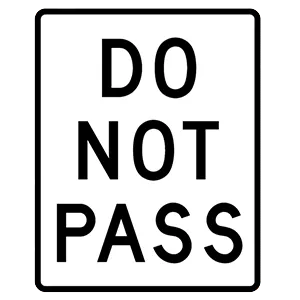
Regulatory signs are white, rectangular signs with black markings. Drivers must obey the instructions posted on all regulatory signs. Where this sign is posted, it is prohibited for drivers to pass one another.
14 . This sign is used to prevent:
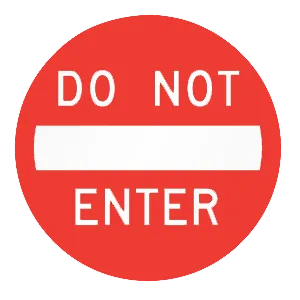
This sign warns that a road has one-way traffic and you must not enter from your current direction.
Need Car Insurance? No problem!
Compare the best rates in Oregon and find a personalized policy that meets your needs.
1. Are You Currently insured ?
2. Married ?
3. Do you own your Home?
4. Do you have more than 1 car ?
5. Have you or a Family Member Honorably Served in U.S. Military ?
6. Your Name
7. Age
8. Zip code
IMPORTANT REMINDER:Auto Insurance is Mandatory to drive in Oregon. Get covered before you hit the road to avoid any fines.
Ranked by best match
